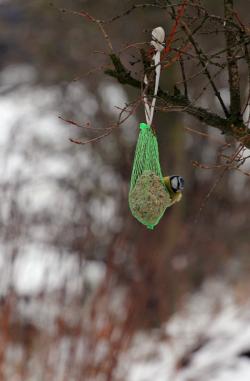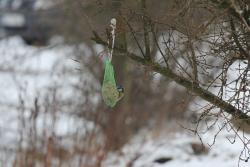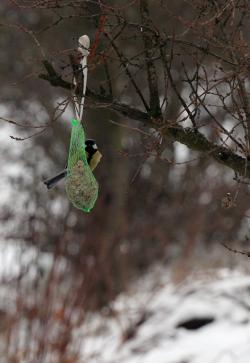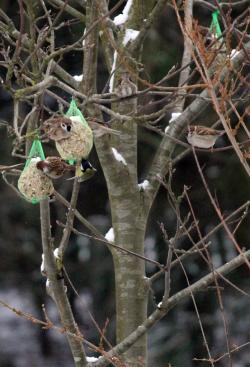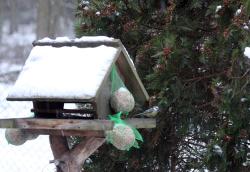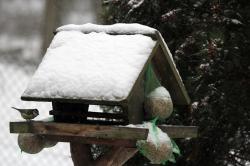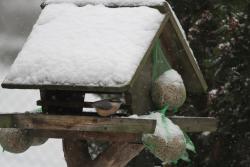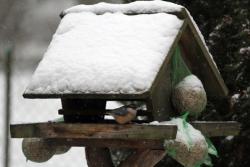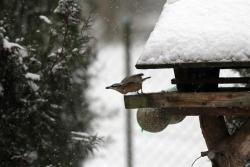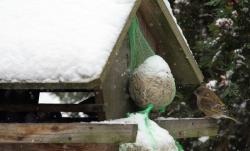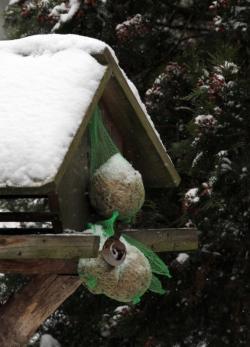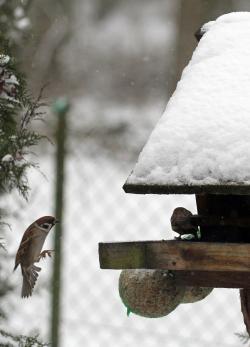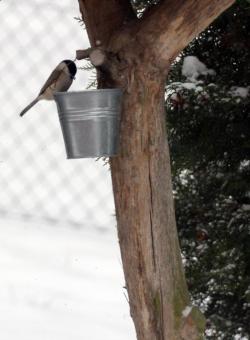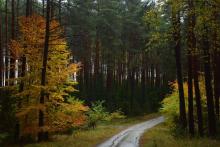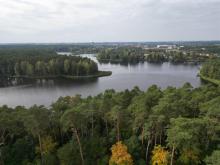 Asset Publisher
Asset Publisher
Polish forests
Poland is in the European lead, while concerning the area of all forests. They cover about 29,2 % of the country territory, and grow within the area of 9,1 million hectares. The overwhelming majority of the forests is state owned, of which almost 7,6 million hectares are managed by the State Forests National Forest Holding..
The number of Polish forest is still growing. The forestation rate of the country has increased from 21 % in 1945 to 29,2 % at the moment. Between 1995 and 2008, the forest area increased by 310 thousand ha. The basis for afforestation works is the "National Programme for Increasing the Forest Cover" (KPZL), assuming an increase of the forestation rate up to 30 % by 2020 and up to 33 % by 2050. Polish forests abound in flora, fauna and fungi. 65 % of the total number of animal species live there.
The forests grow in our country on poor soils, mainly because of the development of the agriculture in previous years. It influences the distribution of the types of the forest sites in Poland. Over 55 % of the forest areas is covered with coniferous forests. In other areas, there are forest sites, mainly the mixed ones. Their small part constitute alder and riparian forests – not more than 3 %.
In the years 1945 – 2011 the area of natural deciduous tree stands within the area of the State Forests National Forest Holding increased from 13 to 28,2 %.
Within the lowlands and uplands the most often occurring tee species is pine. It covers 64,3 % of the forest area of the State Forests National Forest Holding and 57,7 % of private and commune forests. In the mountains the predominant species is European spruce ( in the west) and European spruce with beech (in the east). Domination of pine is the result of carrying on sustainable forest management in the past. Once, the monocultures (crops or cultivations of one species) were the answer to the great demand of industry for wood. Such forests appeared to be quite fragile to climatic factors. They also were often the prey of pests' expansion.
In Polish forests, the share of other tree species, especially deciduous trees have been systematically increasing. The foresters have stepped aside from monocultures – that is why, they try to fit specific species of the forest stand to the natural stand, that would be proper for the given area. Thanks to that, in the years 1945 – 2011, the area of the deciduous tree stands within the lands of the State Forests National Forest Holding increased from 13 to 28,2 %. There occur more and more frequently the following tree species: oaks, ashes, maples, sycamore maples, elms, but also birches, beeches, alders, poplars, hornbeams, aspens, tilias and willows.
Our forests are the most often represented by the forest stands aged 40 to 80 years. The average age of the forest equals 60 years. More and more trees are of big size at the age over 80 years. Since the end of the Second World War, the forests' area has increased up to almost 1,85 million hectares.
Raport o stanie lasów w Polsce 2012
 Asset Publisher
Asset Publisher
Dokarmiajmy ptaki
Dokarmiajmy ptaki
Zima dla ptaków to trudny okres. Dokarmianie ptaków w tym okresie pozwala przetrwać naszym leśnym sprzymierzeńcom
Zima dla ptaków to trudny okres. Niskie temperatury zwiększają wydatek energetyczny, jaki ptasie organizmy potrzebują do przetrwania. Wysoka pokrywa śnieżna utrudnia zdobycie pokarmu, którego jest znacznie mniej niż w okresie pełnej wegetacji. Dokarmianie ptaków w tym okresie pozwala przetrwać naszym leśnym sprzymierzeńcom. Ptaki są bardzo ważnym elementem ekosystemu leśnego pozwalającą utrzymać naturalną równowagę w lesie.
Leśnicy od zawsze doceniali ich rolę w ekosystemach leśnych. W lasach gospodarczych zakłada się remizy, w których wysadza się gatunki owocodajne będące bazą pokarmową nie tylko dla ptaków. Wywiesza się budki lęgowe, pozostawia drzewa dziuplaste pozostawia biogrupy starych drzew wśród upraw i wreszcie dokarmia ptaki w okresie zimy. Wszystkie te zbiegi wpisują się w ramy jednej z metod ochrony lasu wykorzystującej naturalne czynniki ekosystemu leśnego zwanej metoda ogniskowo kompleksową. Dokarmianie ptaków poza pomocą skrzydlatym gościom pozwala na obserwacje ptaków gromadzących się przy karmnikach. Możemy podziwiać różnorodnośc ptasiego świata Możemy podziwiać różnorodność ptasiego świata, rozpoznawać gatunki i ich zachowania. Bywalcami leśnych karmników są sikory, jest to najliczniej reprezentowany rodzaj prym wiedzie tu żółto wybarwiona sikora bogatka nie mniej liczna jest sikora modra z niebieskim ubarwieniem na głowie zalatują również sikora uboga, sosnówka oraz czubatka. Żółto ubarwione ptaki większe od bogatki odganiające pozostałych gości karmników to dzwońce. Stadnie przylatują koneserzy nasion z olchowych szyszek- czyże. Częstym gościem na kulkach z tłuszczu i nasion oraz słoninie jest dzięcioł duży, kowalik czy pełzacze leśny i ogrodowy. Na przelotach do karmników przylatują jery- szczególnie pod koniec lutego. Przy karmniku można zobaczyć wróble, mazurki, kosy, kwiczoły, nasionami nie pogardza grubodzioby czy krzykliwe sójki. W pobliżu można czasami dostrzec polującego na bywalców karmników krogulca. Przy dokarmianiu stosowane są karmniki drewniane różnych konstrukcji, butelki z dozownikami wypełnione ziarnem, kule z tłuszczu i nasion czy płaty niesolonej słoniny.
Ptaki odwiedzające karmniki chętnie zjadają nasiona prosa, pszenicy, owsa jednak największą popularnością cieszy się słonecznik, lubią go: sikory, dzwoniec, wróbel, mazurek, czyż, kowalik, trznadel. Popularna karmą są płaty słoniny, co, ważne niesolonej powinna być ona jednak świeża i wymieniana szczególnie po okresach ociepleń. Amatorami owoców jak kawałki jabłek, jarzębina czy krojone rodzynki są drozdy kos i kwiczoł. Chleb odpowiednio rozdrobniony powinien stanowić tylko dodatek. Karmienie ptaków samym chlebem ma negatywny wpływ na ich układy pokarmowe. Dużą popularnością cieszą się kulki tłuszczowo nasienne. Dokarmianie rozpoczynamy późną jesienią stopniowo zwiększając porcje pokarmu w okresie zimy, im bliżej wiosny zmniejszamy porcje aż do zakończenia. Podczas dokarmiania musimy pamiętać, aby go nie przerywać, nagłe przerwanie może mieć negatywne skutki dla ptaków.


 fot. Paweł Fabijański
fot. Paweł Fabijański
 fot. Paweł Fabijański
fot. Paweł Fabijański
 fot. Paweł Fabijański
fot. Paweł Fabijański

